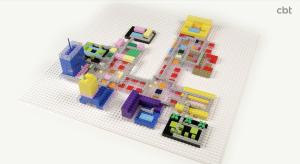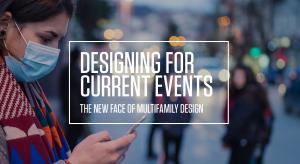
Wellness Put to Practice
The connection between wellness and the measured success of our designed environments is at the forefront of our minds. Well-being in designed environments has become a multifaceted concept that spans both the physical and mental applications. In this CBT Context piece, we aim to dig deeper into conversations of wellness in the workplace and show how thoughtful planning and key design strategies can lead to more successful workplace environments. Our endeavor is to construct a space that not only meets the needs of today but stands as a testament to our commitment to a more equitable, sustainable, and health-conscious future.
Mindfulness Spaces
CBT has always focused on human-centered design. We believe an approach to successful planning focuses less on square footage requirements and headcounts and more on the activities and behaviors. This is essential not only for function and efficiency but also for supporting and improving well-being. By incorporating psychological comfort and behavioral influences, designers can create environments that enhance the user experience and in turn, support company goals. Understanding the value of crafting spaces tailored to the user results in mindful spaces that address clarity, comfort, and choice.
Designing for Well-being Requires a Comprehensive Understanding of the User and Behaviors Happening at Every Intersection of a Work Day
- Comfort to address personal preferences
- Choice to select environments without compromise
- Clarity to know which spaces best support activities

Shedding Light on Natural Light
Access to natural light is one of the most impactful elements for employee wellness. It regulates circadian rhythms, boosts mood, and enhances productivity. CBT and our clients have long understood the value in emphasizing access to natural light, and moving forward we are finding innovative ways to evaluate this as a design driver early in the process. Looking strategically in early design phases allows us to understand the opportunities, and define priorities on how to support planning around natural light:

Understanding the Importance of Site Evaluation, Pre-planning and 3D Modeling to Enhance Strategies of Natural Light
- Prioritize the adjacencies that control or enhance qualities of natural light
- Reduce physical barriers while still allowing for sense of space and separation when needed
- Explore reflective materials to help reflect light through the space


Creating Sustainable Environments
Human health and social equity go hand in hand with responsible design. A holistic approach considers the material composition in manufacturing and the impact on workers and surrounding communities. Selecting materials that elevate supply-chain human rights encourages a more holistic approach to global health and wellness.
Responsible design also extends to climate health. A comprehensive evaluation of building materials accelerates the drive to zero carbon emissions by building less, reusing and retrofitting more, and choosing materials and products that will better serve human and environmental health over the long term.
Collaboration with scientists, manufacturers and designers leads to better processes, universal standards, and environmental product declarations that provide transparency for data informed decision-making with our clients.
Sustainable Material Selection is Just One Component in Creating Healthy Environments
- Improve indoor air quality with lower VOC to reduce air pollution
- Avoid harmful materials, such as PFAS, stain repellents, and antimicrobials
- Source local building products
- Source ethical building products to ensure environmentally friendly harvesting and life cycle of materials
Growing Beyond Green Walls
How are we implementing the driving forces of biophilic design into our everyday experiences? These design strategies should feel inherent and not forced in our environments, while providing tangible benefits to the users of the space.
Implementing Biophilic Strategies that Provide an All-encompassing Connection to Natural Elements
- Enhance human experience through immersive sensory environments
- Collaborate with artists, experience designers, or other creatives to translate natural elements into built environments
- Provide clear but inspiring pathways of circulation reminiscent of nature
- Use naturalistic forms in shaping built environments
Measured Improvements
Evaluating the effectiveness of wellness initiatives is crucial for continued improvement. Data can inform most successful approaches for expanding utilization in the future. Post-occupancy surveys are an essential tool for this purpose.
Sample Question: When Selecting a Place to Sit in the Open Office, What is it You Are Looking For?

Adapting a Mindset of Continuous Improvement and Data Driven Decisions
- Employee Surveys and Feedback
- Performance Metrics and Behavioral Analytics
- Adapt and Evolve
To sum up: The connection between wellness and workplace design is profound and multi-faceted. By thoughtfully integrating design strategies that support physical, mental, and emotional well-being, organizations can create environments that not only enhance employee health, boost productivity, improve overall job satisfaction, and achieve business goals.
CONTEXT is CBT’s ongoing blog series of innovative design thinking, always responding to the changing world around us and our role as creators within it.


